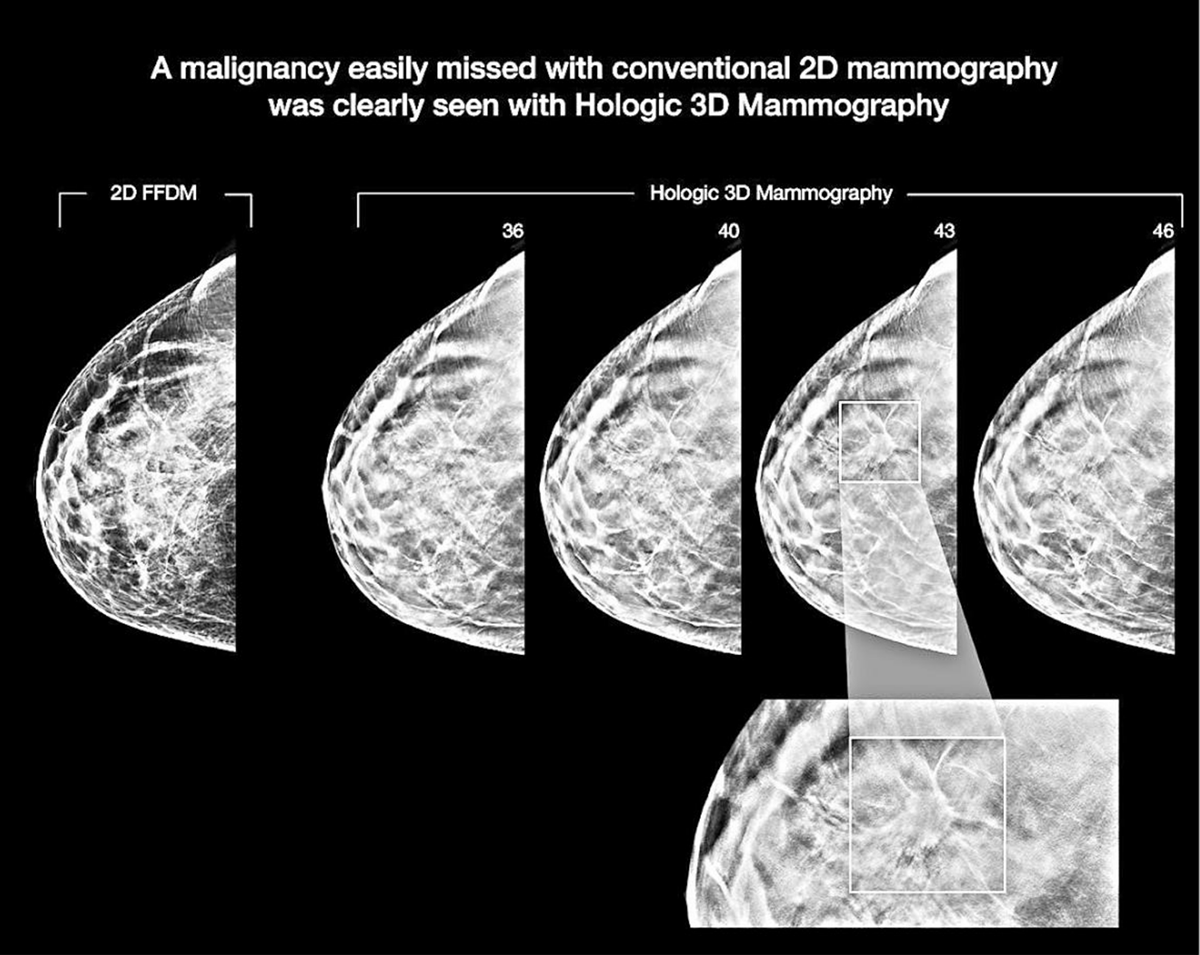Although some women may experience anxiety around scheduling their annual mammogram, they are encouraged to do so, especially now that the technology available locally offers better accuracy in cancer detection and less discomfort.

A mammogram is an X-ray picture of the breast. Doctors use a mammogram to look for early signs of breast cancer.
During a mammogram, your breasts are compressed between two firm surfaces to spread out the breast tissue. Then an X-ray captures black-and-white images that are displayed on a computer screen and examined for signs of cancer. Mammograms play a key role in breast cancer screening. They can detect breast cancer before it causes signs and symptoms. Mammograms have been shown to reduce the risk of dying of breast cancer.
A traditional mammogram creates two-dimensional images of the breast. A newer type of mammogram, the 3D mammogram, creates, like the name suggests, three-dimensional images of the breast.
A 3D mammogram (also known as breast tomosynthesis) is an imaging study that combines multiple breast X-rays to create a three-dimensional picture of the breast.
Dr Tonya Roker-Davis at the Family Medicine Center said 3D mammography is used to detect breast cancer in patients without signs and symptoms.
“As a diagnostic tool, it is used to investigate the cause of a breast lump or other breast abnormalities. At the Family Medicine Center, we are also able to utilize 3D mammography to perform biopsies if a suspicious breast lump is found,” she told Tribune Health.
Dr Roker-Davis said 3D technology offers much more information than traditional breast examinations do.
“In the past, mammograms were painful for a large majority of patients. Advanced technology has resulted in a more comfortable experience. Some women may experience mild discomfort during the process as a result of the slight pressure applied to the breast by the machine. However, this is normal and short-lived. I would advise women to avoid factors that increase breast tenderness prior to the procedure. This includes the week prior to mestruation (breasts may be more sensitive during the pre-menstrual period) and caffeine (as it has shown to increase breast tenderness in some women).”
This type of mammography, she said, provides more images of the breast in thin sections of breast tissue.
“This makes it more accurate and more precise than 2D mammography. It allows the radiologist and the physician to view the breast tissue layer by layer as opposed to a flat image. This is best explained using the analogy of a book. If you look from above at the book, you are able to see the cover but not the actual pages. This describes standard mammography. However, if you were to open the book you can go through the entire book…page by page to see every layer between the covers. This is how 3D mammography works,” she explained.
Dr Roker-Davis said 3D mammography has several benefits in that it detects more cancers than standard mammography, reduces the need for follow-up imaging, and improves breast cancer detection in dense breast tissue and is overall more comfortable for the patient.
With October being Breast Cancer Awareness Month, she is encouraging women not to hesitate in scheduling breast cancer exams.
“Women should always speak to their healthcare providers about the benefits and risks of screening tests when deciding when to start and how often to get a mammogram. As a general rule, screening should begin at age 40. However, based on your risk factors for breast cancer, your healthcare provider may recommend screening at an earlier age,” she said.
“Women should have mammograms performed annually. A yearly mammogram for women ages 40 years and older helps women to become proactive as it relates to earlier detection of breast cancer. This results in less aggressive treatment options if necessary and an increased chance of survival.”
